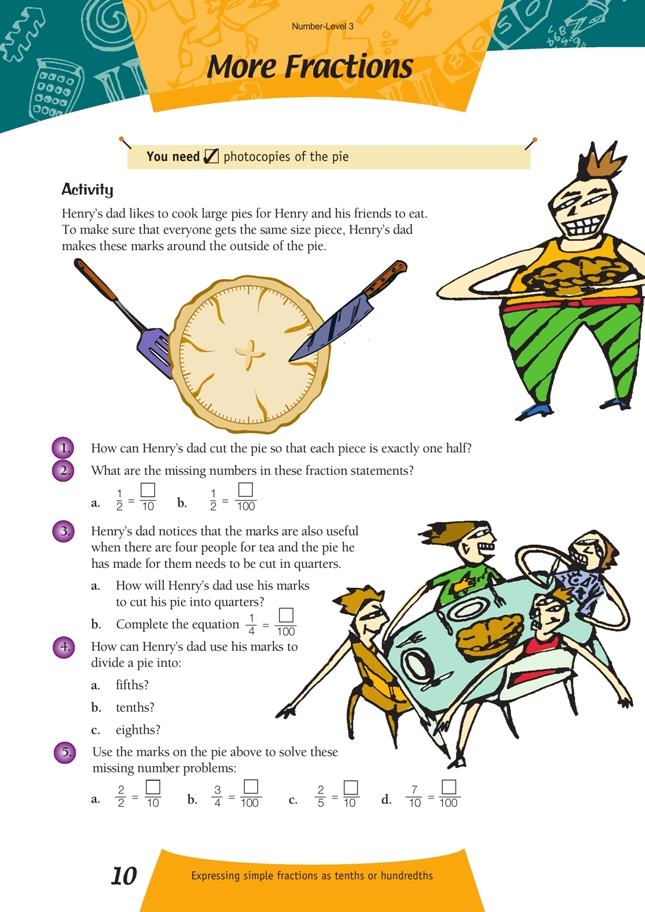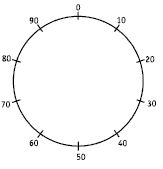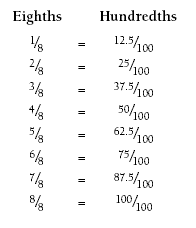This is a level 4 number activity from the Figure It Out series. It relates to Stage 7 of the Number Framework.
A PDF of the student activity is included.
Click on the image to enlarge it. Click again to close. Download PDF (156 KB)
express simple fractions to tenths or hundredths
Pies Copymaster
This activity uses a circle with 100 divisions to help students express simple fractions as tenths and hundredths. A copymaster is provided at the back of this booklet.
Although the students could use any two opposite points to answer question 1, it would be useful if they labelled the large marks in tens starting with a zero and moving either clockwise or anticlockwise.
They would then be able to count the number of tenths that makes a half of the circle. They would need to realise that there are 100 small divisions to answer question 2b.
To do question 4a, students will have to find the centre of the pie and make their cuts from 0, 20, 40, 60, and 80 to the centre.
The centre can be found at the intersection of any two diameters.
Question 4c will present an interesting challenge because students will not be able to divide 100 marks exactly by eight. Once students have found out that 12.5 divisions are needed for each of the eighths, they could make a table of eighths translated to thier respective hundredths amount.
Answers to Activity
1. He can cut the pie from one mark across to the opposite mark.
2. a. 1/2 = 5/10
b. 1/2 = 50/100
3. a. He cuts the pie in half using two opposite marks. On each piece, he finds the mark that is 25/100 from the cut and makes another cut to its opposite mark. For example, a pie marked 0–100 could be cut from 0 to 50 and then from 25 to 75.
b. 1/4 = 25/100
4. a. 100 ÷ 5 = 20. So cut from mark 0 to the centre, then from mark 20 to the centre. Do the same from marks 40, 60, and 80.
b. 100 ÷ 10 = 10. Make five diameter cuts across the pie, the first from 0 to 50, then
from 10 to 60, etc. Another way is to cut from 10 to the centre, 20 to the centre, etc.
c. 100 ÷ 8 = 12.5. Make four diameter cuts: the first from 0 to 50, the second from 12.5 across to 62.5 (12.5 + 50), the third from 25 across to 75 (25 + 50), and the fourth from 37.5 across to 87.5 (37.5 + 50). Another way is to cut from 12.5 to the
centre, 25 to the centre, etc.
5. a. 2/2 = 10/10
b. 3/4 = 75/100
c. 2/5 = 4/10
d. 7/10 = 70/100


